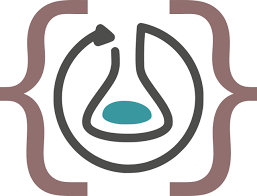Launch in Tutorial Mode
question
galaxy-download
Download
flowchart TD
0["ℹ️ Input Dataset\nExons"];
style 0 stroke:#2c3143,stroke-width:4px;
1["ℹ️ Input Collection\nDiamond makedb"];
style 1 stroke:#2c3143,stroke-width:4px;
2["ℹ️ Input Collection\nORFipy BED"];
style 2 stroke:#2c3143,stroke-width:4px;
3["Diamond: Find hits in ORFs"];
0 -->|output| 3;
1 -->|output| 3;
4["Column Regex Find And Replace"];
2 -->|output| 4;
5["Alignments"];
3 -->|daa_output| 5;
6["Cut"];
4 -->|out_file1| 6;
7["Alignments + BED"];
6 -->|out_file1| 7;
5 -->|blast_tabular| 7;
8["Cut"];
7 -->|out_file1| 8;
9["Collapse Collection"];
7 -->|out_file1| 9;
10["Intersect"];
6 -->|out_file1| 10;
8 -->|out_file1| 10;
11["Filter"];
9 -->|output| 11;
12["Overlapping ORFs"];
10 -->|output| 12;
13["Cut"];
11 -->|out_file1| 13;
14["Compute"];
12 -->|output| 14;
15["Compute"];
13 -->|out_file1| 15;
16["Split file"];
15 -->|out_file1| 16;
17["Report"];
15 -->|out_file1| 17;
18["Tabular-to-FASTA"];
16 -->|split_output| 18;
19["Cut"];
17 -->|out_file1| 19;
20["MAFFT"];
18 -->|output| 20;
21["Filter: Plus strand matches"];
19 -->|out_file1| 21;
22["Filter: Minus strand matches"];
19 -->|out_file1| 22;
23["Join neighbors"];
20 -->|outputAlignment| 23;
54ea37cc-63d1-422a-9f5e-124b8d39e6bd["Output\nJoin neighbors on input dataset(s): Calculated distances"];
23 --> 54ea37cc-63d1-422a-9f5e-124b8d39e6bd;
style 54ea37cc-63d1-422a-9f5e-124b8d39e6bd stroke:#2c3143,stroke-width:4px;
24["Compute"];
21 -->|out_file1| 24;
25["Compute"];
22 -->|out_file1| 25;
26["Concatenate datasets"];
24 -->|out_file1| 26;
25 -->|out_file1| 26;
27["Compute"];
26 -->|out_file1| 27;
28["Cut"];
27 -->|out_file1| 28;
29["Compute"];
28 -->|out_file1| 29;
30["Join two Datasets"];
14 -->|out_file1| 30;
29 -->|out_file1| 30;
31["Mapping report"];
30 -->|out_file1| 31;
Inputs
Input
Label
Input dataset
Exons
Input dataset collection
Diamond makedb
Input dataset collection
ORFipy BED
Outputs
From
Output
Label
toolshed.g2.bx.psu.edu/repos/iuc/rapidnj/rapidnj/2.3.2
Join neighbors
Cut1
Cut
Mapping report
Tools
To use these workflows in Galaxy you can either click the links to download the workflows, or you can right-click and copy the link to the workflow which can be used in the Galaxy form to import workflows.
Importing into Galaxy
Below are the instructions for importing these workflows directly into your Galaxy server of choice to start using them!
Click on Workflow on the top menu bar of Galaxy. You will see a list of all your workflows. Click on galaxy-upload Import at the top-right of the screen Provide your workflow Option 1: Paste the URL of the workflow into the box labelled “Archived Workflow URL” Option 2: Upload the workflow file in the box labelled “Archived Workflow File” Click the Import workflow button Below is a short video demonstrating how to import a workflow from GitHub using this procedure:
Video :
Version History
Version
Commit
Time
Comments
1
476d3d57f 2022-09-01 17:59:14
workflow update
For Admins
Installing the workflow tools
wget https://training.galaxyproject.org/training-material/topics/genome-annotation/tutorials/gene-centric/workflows/Comparative-gene-analysis.ga -O workflow.ga
workflow-to-tools -w workflow.ga -o tools.yaml
shed-tools install -g GALAXY -a API_KEY -t tools.yaml
workflow-install -g GALAXY -a API_KEY -w workflow.ga --publish-workflows
 Download Workflow RO-Crate
Download Workflow RO-Crate